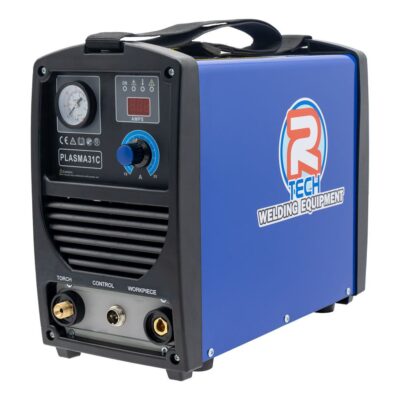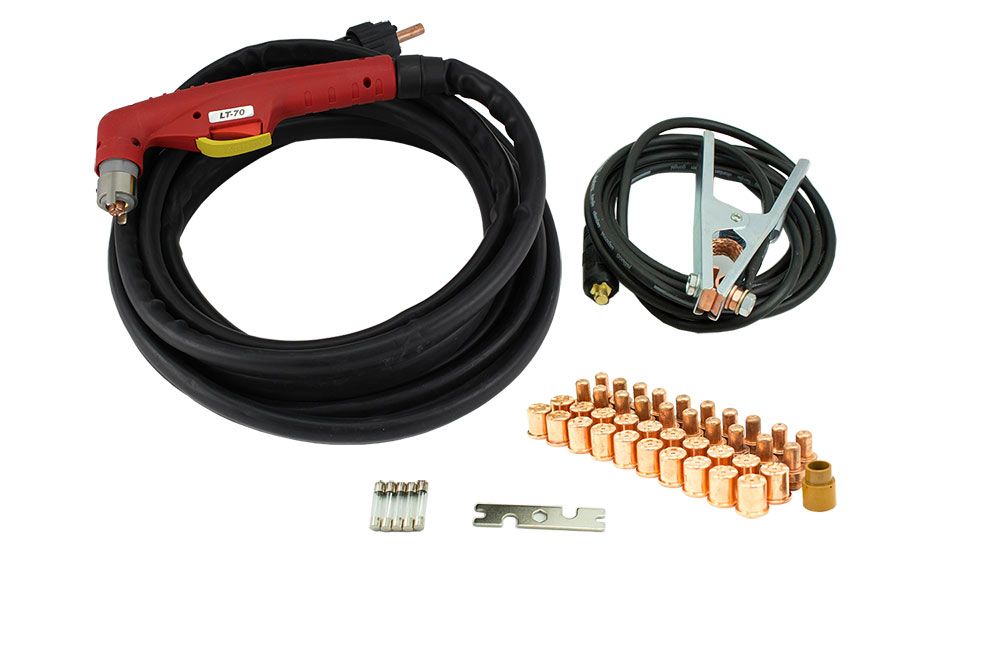How Does A Plasma Cutter Work?
What is a Plasma Cutter?
Before we go through how a plasma cutter actually works, we should probably establish what a plasma cutter actually is. Now if you know what plasma cutter is, feel free to scroll down to the next section.
A plasma cutting machine is a tool used to cleanly cut through thick pieces of metal. These machines save money and time over, the before popular, cutting discs. We supply three different types of plasma cutters, each with different maximum cutting capabilities.

How Does Plasma Cutting Work?
A plasma cutter uses a mixture of compressed air and electricity to create an arc that is heated up to a staggering 25,000 degrees celsius. Now we could just leave it at that and say that's how a plasma cutter works here's how to use your plasma cutter and be on your way, however, we will look into this with a bit more detail. We will go through the roles of each consumable, how they interact with the other components to generate that mighty cutting arc.
The Key Elements
Firstly I want to apologise in advance for ruining some movie magic for you as it's not as straight forward as pulling your plasma out of a back pack, ready to go to town on the door to Gotham cities central bank., its a bit more complex than that I'm afraid!
To get anything going you need the 2 key elements, electricity and compressed air. Without these elements, you will get nowhere fast. We are sometimes asked if you can use welding gas over the compressed air, don't do this as you will very quickly find yourself in the arms of this countries fantastic doctors and nurses.
Depending on the amperage of the plasma cutter, the electricity supply will vary. Our P31C Plasma Cutter will run smoothly on a 13 amp domestic supply where as the 50HF requires 240v 32amps and the 100I requires a whopping 415V 32amps, but what would you expect when you've got a machine that'll cut through nearly 2 inch thick material?!.
So now that we have the electricity covered, we need to move on to the compressed air. The best way to deliver this to your machine is via an air compressor. Plasma cutting does require a lot of air so we recommend a compressor with a minimum capacity of 100 litres for single phase models and 220 litres for three phase models. We have a large selection of compressors available on our website.

Plasma Cutting Consumables
With the two key elements mentioned, we now need to look at the plasma cutting consumables. Just like any machine we list on the website, all consumables need to be present for the plasma cutter to operate correctly. As each consumable has a role to play in creating the arc, it cannot do this without another consumable doing its job. We will go through the consumables now and explain what they do to help generate the cutting capabilities.
The Retaining Nozzle
This section ensures that all of your other consumables, such as the tip, electrode and gas distributor stay in place. The retaining nozzle sometimes has a removable spacer attached, the purpose of this section is to ensure that the tip is the perfect distance from the material to further extend the life of the consumables. Our plasma cutters are fitted with drag tips however and this means that you can contact them to the material and cut but we will go through that in the next section.
The Cutting Tip
Cutting Tip - The cutting tip is pretty much a "what it says on the tin". This consumable plays a vital role in producing the cutting capability of your plasma cutter. On both our P31 and P50, these tips are drag tips and this means that you do not have to hold them a short distance away from the cut. You can drag them along the material and cut just fine however you will shorten the life of the tip significantly. The cutting tip guides the cutting arc, generated by the electrode more on that soon, towards the material.
The Electrode
Plasma Electrode - A Plasma Electrode provides the power to the compressed, which is swirling around it, to generate the arc. This section also plays a role in conducting high frequency during the start up of the cut. If you have trouble initiating an arc, it is certainly worth ensuring this section is installed and in a relatively good condition.
The Gas Distributor/Swirl Ring
The Gas Distributor/Swirl Ring - The gas distributor, also known as the swirl ring, ensures that the air is evenly distributed around the electrode and into the cutting tip. Cold air is forced around the other consumable to add that little more longevity to the consumables. As the air swirls around the electrode, electricity generates high frequency which in turn ignites this air and creates the arc.
Summary
We hope that gives you a better idea of how a plasma cutter works and also what is required to get your new machine running to its maximum capabilities. Should you have any more questions on our plasma cutters or any other machines in our range, please give us a call on 01452733933 or email salesdept@r-techwelding.co.uk. Our friendly and knowledgeable staff are more than happy to answer any questions you might have.




